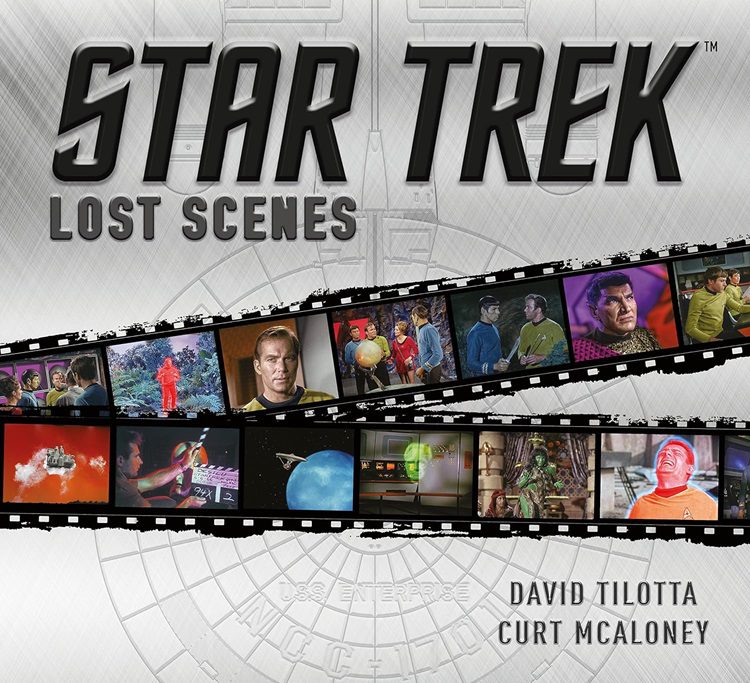
Starting with the Original Series, the Star Trek franchise has had a long involvement in the publishing world, including James Blish’s adaptations of episodes, original novels published by Bantam Books and Pocket Books, and reference books such as Bjo Trimble’s Star Trek Concordance and Joseph Schnaubelt Franz’s Star Fleet Technical Manual. Star Trek: Lost Scenes by David Tilotta & Curt McAloney from Titan Books is a fascinating look at the series that is sure to be held in high esteem by fans.
The authors explain in their Introduction that the book “is a photographic compendium of the discarded bonus material,” like a print version of deleted scenes that would appear on DVD. At the time, the executives in charge didn’t consider the material to have any value, unaware that a TV show could have fanatical viewers that would want to own literal pieces of it. But Gene Roddenberry was aware, and through his company “Star Trek Enterprises sold film frames by the millions from 1968 through about 1990.” While most of what was sold featured images that appeared in an episode, there was also highly collectible material that didn’t make “the finished print-such as behind-the-scenes elements, deleted scenes, and bloopers,” which are the three sections of the book, The pictures are from the authors’ collection, which have been restored, the processes of which they explain.
Making up about half the book, “Behind the Scenes” are from pre- and post-production stages. The reader can see ships against blue screens, how matte painting were used to create background setting of different planets, and how multiple Kirks (William Shatner) appeared on screen together in “The Enemy Within” and “What Are Little Girls Made Of.” A lot photos of aliens and both interior and exterior settings include a crew member with a slate, usually it’s second assistant cameraman Bill McGovern. The exterior shots have the bonus of information about where they were filmed, such as where on the Paramount lot or what California park. My favorite picture in this section of of technician Harry Kersey, smoking a cigarette, shirt unbuttoned, as he holds a slate in front of an 11-ft model of the Enterprise. It both dispels the magic of TV while revealing it to be hard work.
The “Deleted Scenes” “were assembled by pairing photos from film frames…with relevant script excerpts to suggest how the scenes might have been presented.” The scenes are from 36 different episodes including the pilot “The Cage.” Hardcore fans might already know this material, but it was all new to me, and I thoroughly enjoyed seeing it. Even if not technically canon, these scenes add a little something to these episodes, more moments with the characters that are much more authentic than their appearances in novels, comics, etc.
“Bloopers” offers familiar frames of scenes for those who have seen the reels at conventions. There are also technical flubs like an optical error that makes it look like the Enterprise is diving into a planet rather than orbiting it and the wardrobe malfunction of Shatner’s stunt double (Paul Baxley) splitting his pants in the rear during a fight scene.
That section and the book conclude with a lot of people smiling from different amusing mishaps. As a reader, I was left smiling too because of all the wonderful discoveries Lost Scenes offers. I am grateful that David Tilotta and Curt McAloney have shared their film-frame collections and for all the work involved in restoring the images, as I am sure other Trek fans will be as well. I can’t recommend it enough.